Sheridan County Water Supply Report
September Report
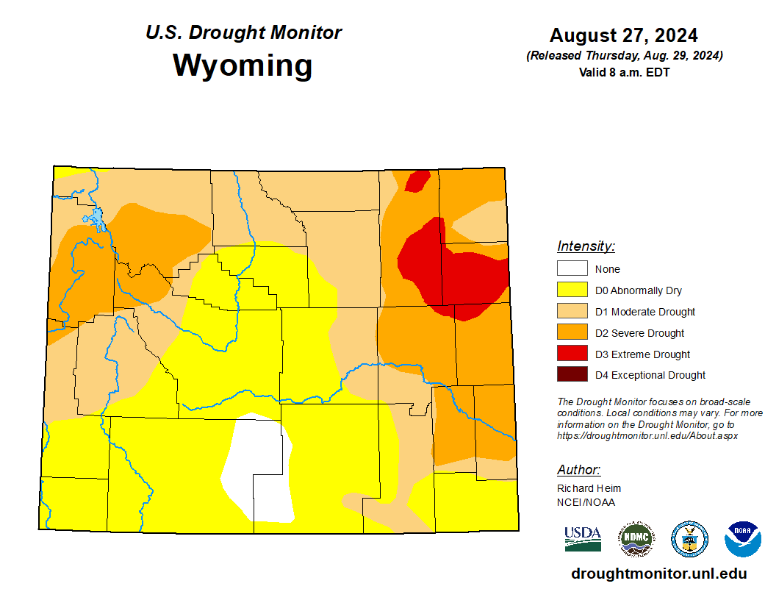
How to Use This Report
What is this report?
Instead of combing the internet and clicking a million links to learn about water supply in Sheridan County, let us do the work for you! This report compiles many trustworthy sources into an easy-to-read and access report. It includes information about streamflow, snowpack, drought, soil moisture, and precipitation for both the Tongue and Powder Rivers. This report is a one-stop shop for information that can help you be aware of water in Sheridan to make decisions for your ranch and your land.
Helpful Hints:
- All forecasts have the word forecast underlined in the page's title.
- Each page has a little blurb at the top that gives you some helpful information.
- If you would like to know more about a topic, check out the sources at the bottom of the page!
- Sources are precise and bring you as close as possible to the original source.
Table of Contents
Drought Index and Change
Drought History and Forecast
Precipitation - Tongue River
Precipitation - Powder River
Reservoir Capacity and Stream Flow
Select Stream Flow Stations
Tongue Water Supply Forecast
Powder Water Supply Forecast
Temperature and Precipitation
Temperature Forecast and Precipitation Forecast
Vegetation Drought Responses and Soil Moisture
Drought Index and Change
The U.S. Drought Monitor gives you a broad overview of the drought conditions in the US. Its strength is bringing together many ways of determining drought. It is useful as a large-scale view of drought, but local drought resiliency efforts are not considered.

All of Sheridan County is in D1, Moderate Drought. This extends west and south of Sheridan County, with nearly all of Wyoming experiencing some level of drought.
Degradation occurred across most of Sheridan County except the Bighorn mountains and far east. This was class 1 degradation.
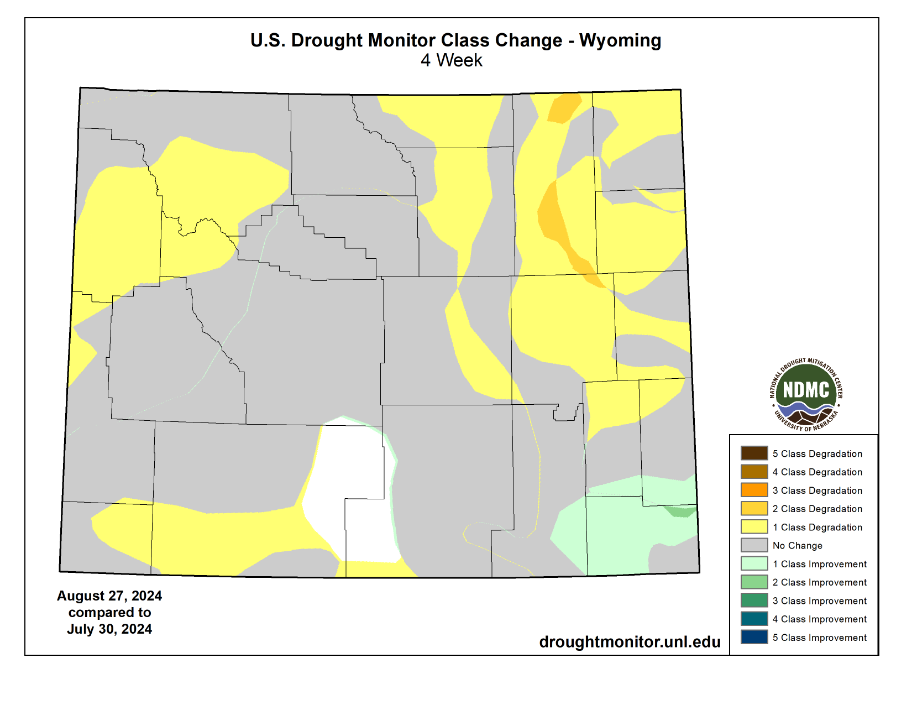
https://droughtmonitor.unl.edu/Maps/MapArchive.aspx
https://droughtmonitor.unl.edu/Maps/ChangeMaps.aspxhttps://droughtmonitor.unl.edu/Summary.aspx
Drought History and Forecast
The first half of this page shows current conditions, followed by the forecast. The outlook is a prediction of
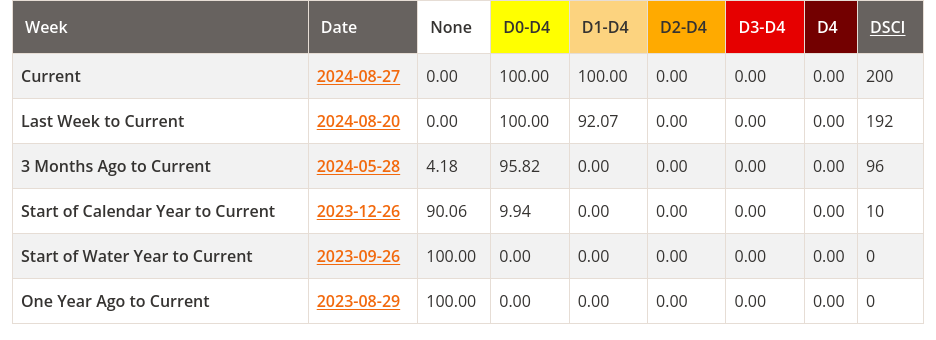
Drought conditions have degraded compared to three months ago, when most of the county was experiencing "Abnormally Dry" or no drought conditions.
Looking into September, NOAA reports: "The official September Outlook favors subnormal precipitation throughout the region, with odds for notable dryness exceeding 40 percent outside the southern and western tiers. With no significant precipitation forecast in the short-term, drought conditions should persist or intensify where they exist."1
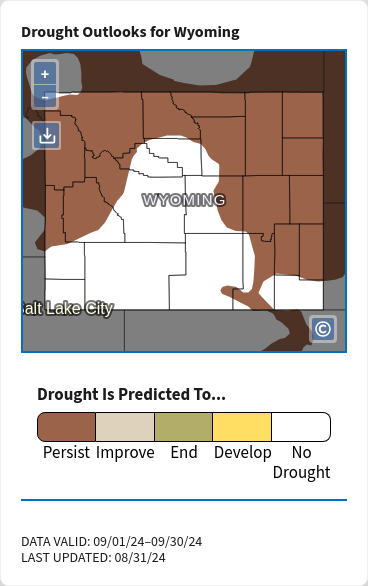
https://droughtmonitor.unl.edu/CurrentMap/StateDroughtMonitor.aspx?fips_56033
https://www.drought.gov/forecasts
1https://www.cpc.ncep.noaa.gov/products/expert_assessment/mdo_summary.php
https://www.cpc.ncep.noaa.gov/products/expert_assessment/mdo_discussion.php
https://droughtmonitor.unl.edu/Summary.aspx
Precipitation - Tongue River
These graphs represent precipitation affecting the Tongue River. Snow water equivalent (SWE) represents the amount of water contained within the snowpack when it melts.
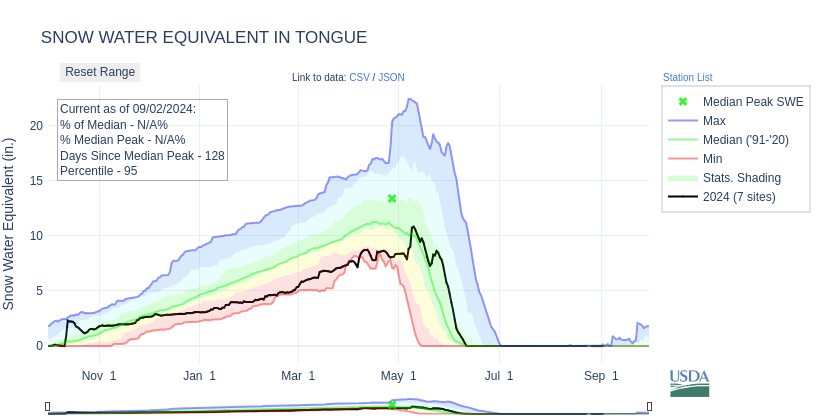

Snow-water equivalent is at 0 inches. This is normal for this time of year. Precipitation is at 95% of median, within the normal range. It is in the 33rd percentile.
https://nwcc-apps.sc.egov.usda.gov/awdb/basin-plots/POR/WTEQ/assocHUCwy_8/tongue.html
https://nwcc-apps.sc.egov.usda.gov/awdb/basin-plots/POR/PREC/assocHUCwy_8/tongue.htm
Reservoir Capacity and Stream Flow
The total capacity of reservoirs and current water storage includes inactive storage below the outlet.
Lake DeSmet
As of September 1, Lake DeSmet has a total of 201,328 acre-feet in storage, a decrease of approximately 5,000 acre-feet since August.
| Reservoir | Total Storage (Acre-ft) | Current Storage (Acre-ft) | Percentage of Total Capacity (%) |
|---|---|---|---|
| Bighorn | 4,624 | 1,182 | |
| Cross Creek | 824 | 66 | |
| Dome Lake No. 1 | 1,506 | 842 | |
| Kearney Lake | 6,324 | 1,677 | |
| Park Lake | 10,362 | 4,875 | |
| Sawmill | 1,275 | 824 |
Tongue River Reservoir
Water levels decreased over the last month from 67,510 acre-feet to 55,154 acre-feet. The reservoir is 69.8% full.
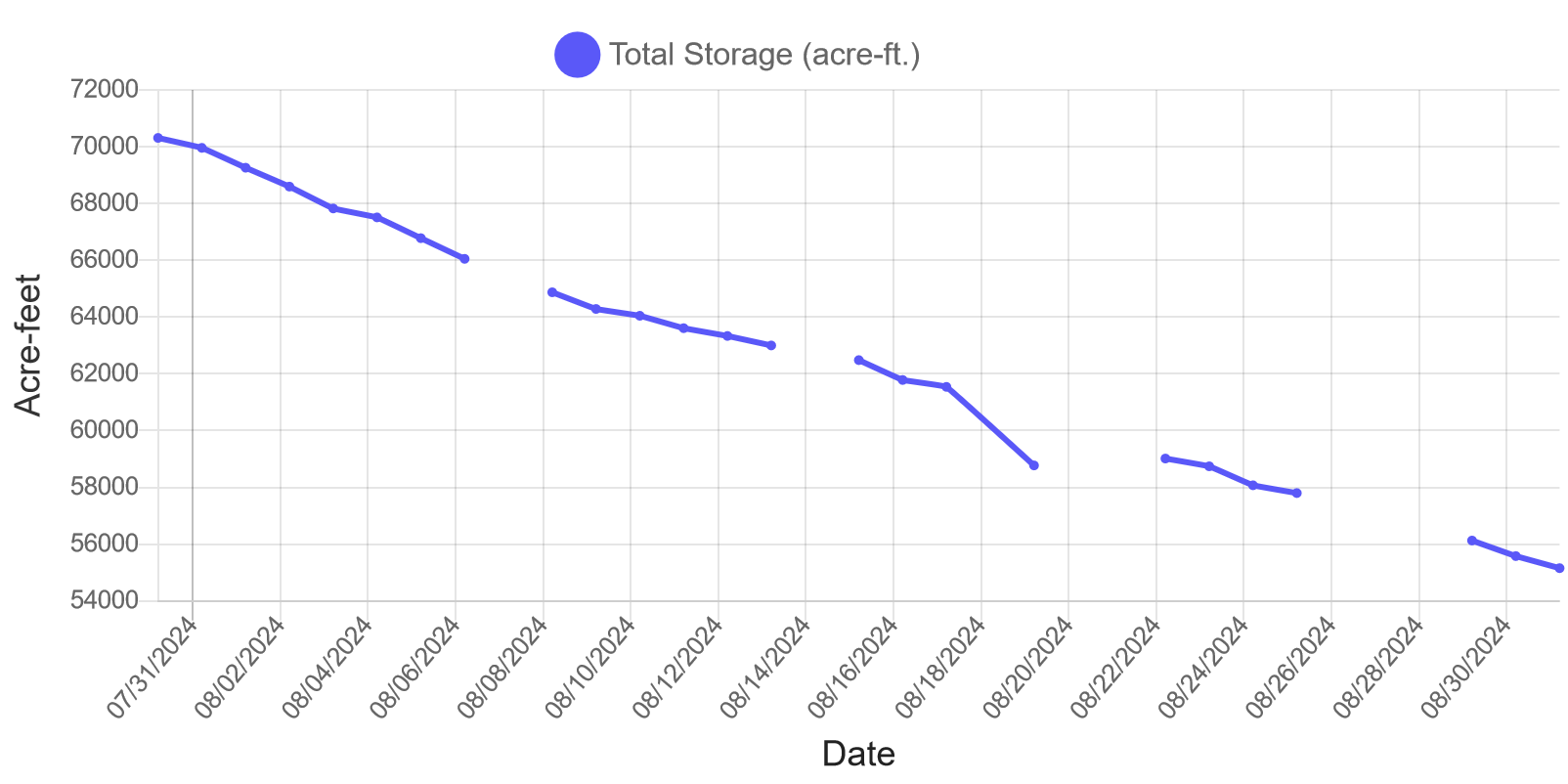
Reservoir Level
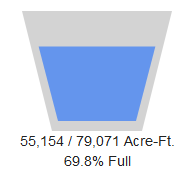
This graph displays the real time data of the Tongue River Reservoir. This data remains provisional until it is officially reviewed due to variables that can affect the gages. These include but are not limited to algal and aquatic growth, sediment movement, malfunction of recording equipment, and back water from ice or debris such as log jams.
Sources:Lake DeSmet Operating Department at lakedesmet@johnsoncowy.us
https://seoflow.wyo.gov/Data/Map/Parameter/Total%20Storage/Location/Identifier/Interval/Latest
https://gis.dnrc.mt.gov/apps/stage/gage-report/location/3f087fe86bde421f857dfedff4e40e93/1680476400000-1683154740000
Select Stream Flow Stations
These graphs give context to stream flow percentile classes. The selected USGS stream gauges are on the stateline with Montana, being the downstream end of the Tongue and Powder within our region. The flow represent average 7-day flows. The vertical axis is logarithmic meaning it goes up by 10x for each major tick mark.
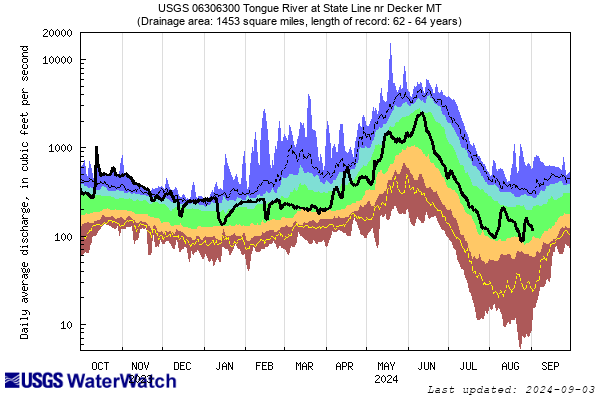

Streamflow has generally remained in the "Normal" range, or 25- 75th percentile.
Streamflow is in the "Normal" range or 25-75th percentile.
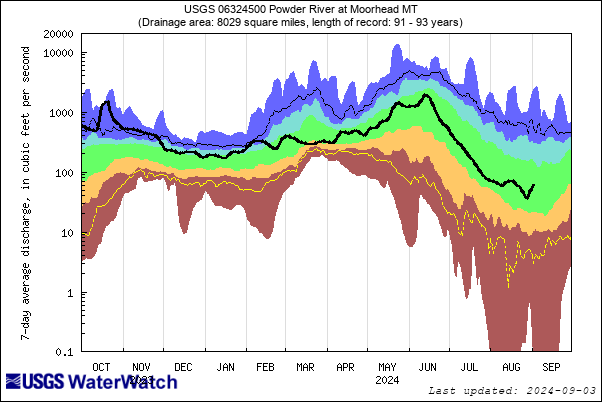

https://waterwatch.usgs.gov/index.php?id=mv01d
https://waterwatch.usgs.gov/?id=wwchart_sitedur&ofmt=plot_mvbg&site_no=06306300
https://waterwatch.usgs.gov/?id=wwchart_sitedur&ofmt=plot_mvbg&site_no=06324500
Temperature and Precipitation
Temperature and precipitation are large drivers of changes in drought conditions. As you might expect, high temperatures and low precipitation can worsen drought conditions while low temperature and high precipitations can improve them.

August was warmer than most years, with a temperature anomaly 1 to 2 degrees higher than usual.
The precipitation anomaly for most of Sheridan County was 0 mm, indicating normal or near normal precipitation for August compared to other years.

https://www.cpc.ncep.noaa.gov/products/tanal/temp_analyses.php
https://www.cpc.ncep.noaa.gov/products/Global_Monsoons/American_Monsoons/NAMS_precip_monitoring.shtml2
https://www.cpc.ncep.noaa.gov/products/expert_assessment/mdo_discussion.php3
https://www.weather.gov/byz/daily_records?city=Sheridan
Temperature Forecast and Precipitation Forecast
https://www.cpc.ncep.noaa.gov/products/predictions/long_range/lead14/interactive/index.php Explore link above for an Interactive map that displays percentage chance above and below normal for any point in US
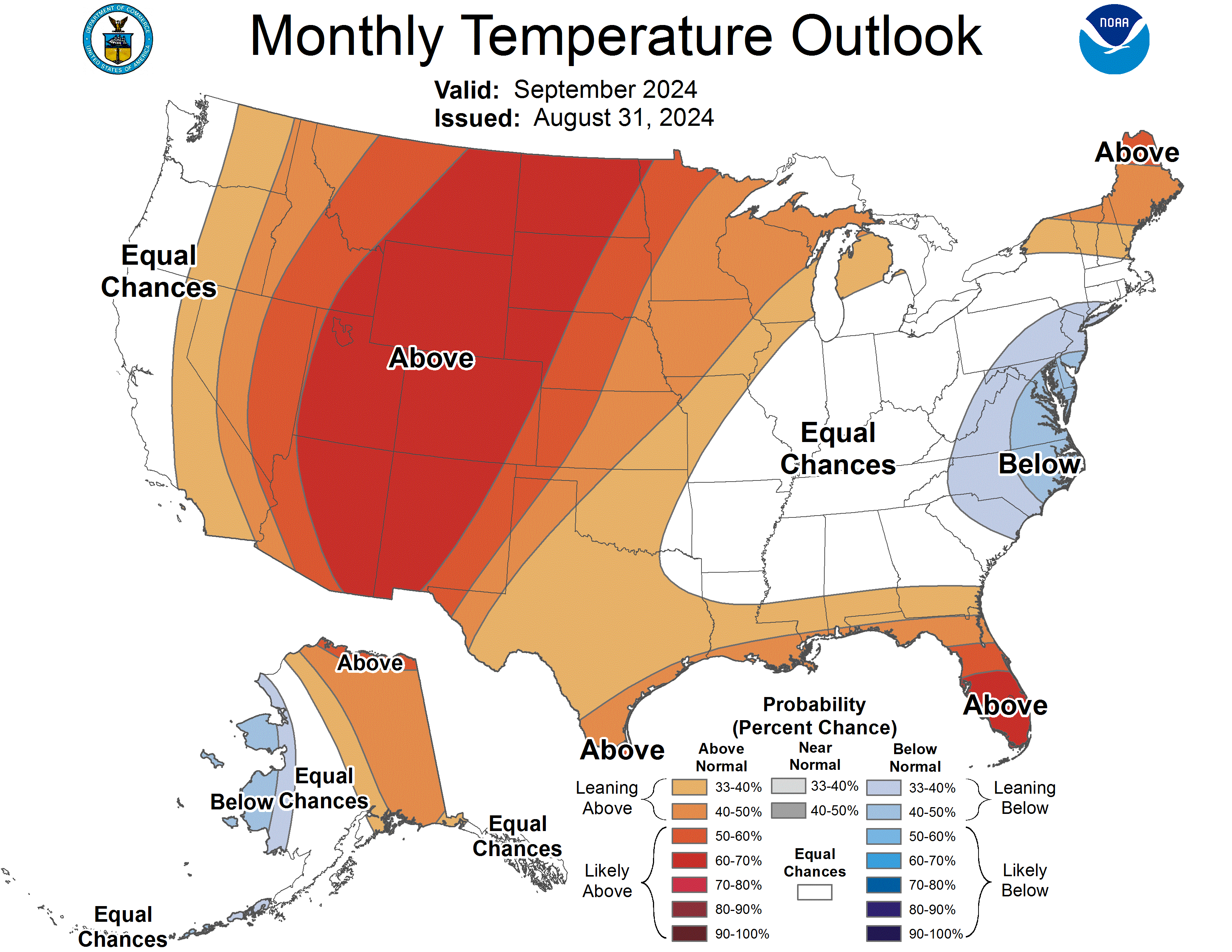
Sheridan has 60-70% probability of temperature above normal for September. This follows a band of expected heat across the west.
Sheridan County has a 40-50% probability of precipitation being below normal in September, indicating a hot and dry month ahead.
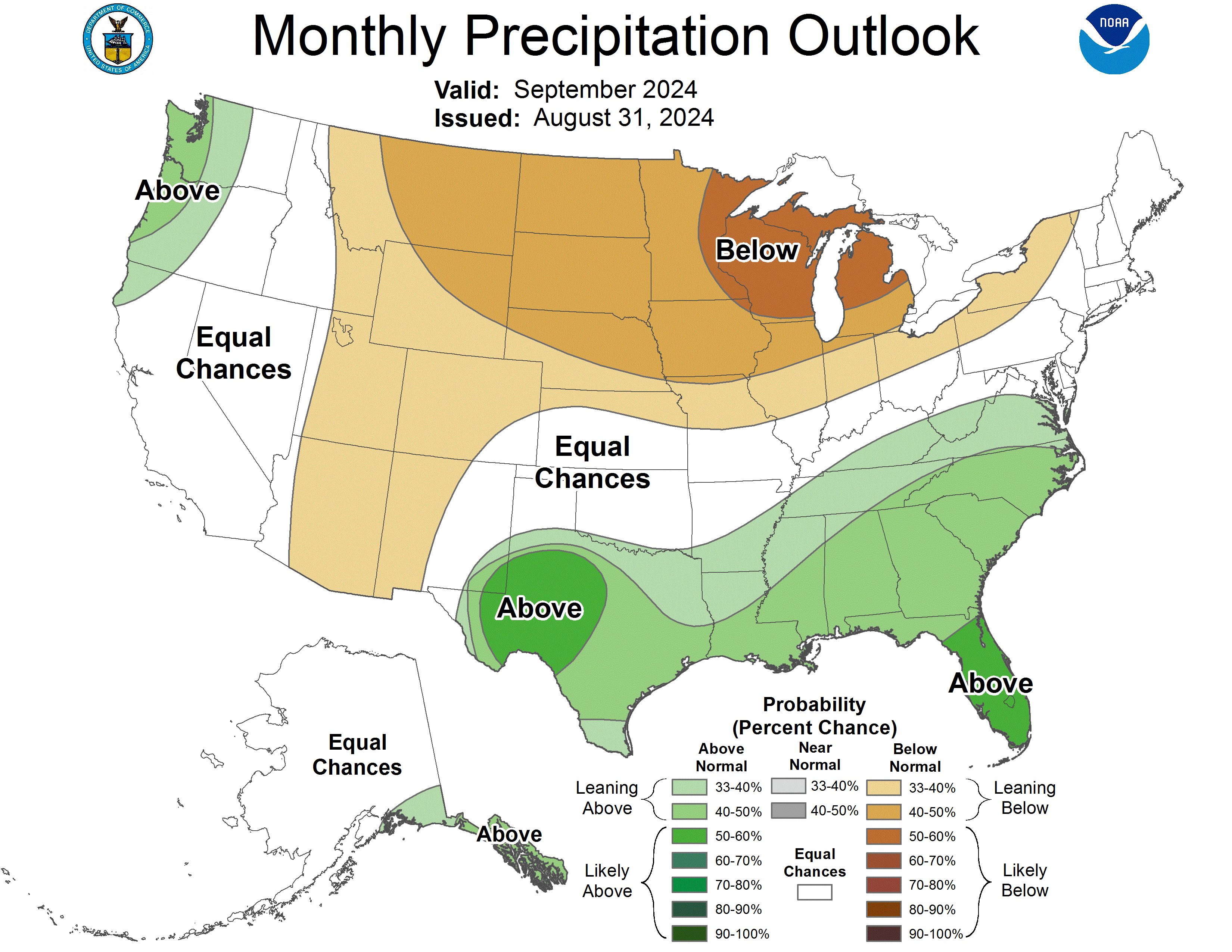
https://www.cpc.ncep.noaa.gov/
https://www.cpc.ncep.noaa.gov/products/predictions/long_range/lead14/interactive/index.php –Interactive with percentages
https://www.cpc.ncep.noaa.gov/products/expert_assessment/mdo_discussion.php
Vegetation Drought Responses and Soil Moisture
The graphs below are two ways of visualizing on-ground conditions. The vegetation Drought Response Index (Vegdri) uses a satellite to estimate vegetative stress. Soil moisture is helpful when looking at many things. Soil acts as a bank for moisture and can buffer drought degradation or improvement. It is also the water that plants have available to them so is linked to vegetative stress.
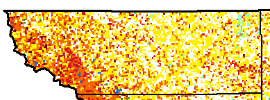
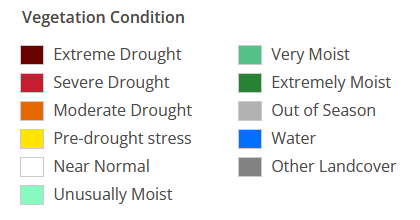
Vegetation across the county is showing pre-drought to moderate or severe drought stress. The more severe drought stress is seen on the western side of the county.
Soil moisture percentile is fairly consistent across the county at 40 to 60%(grey). Southeast Sheridan County is experiencing lower soil moisture percentile at 30 to 40% (yellow). This is despite the most vegetative stress still being seen on the western side of the county.
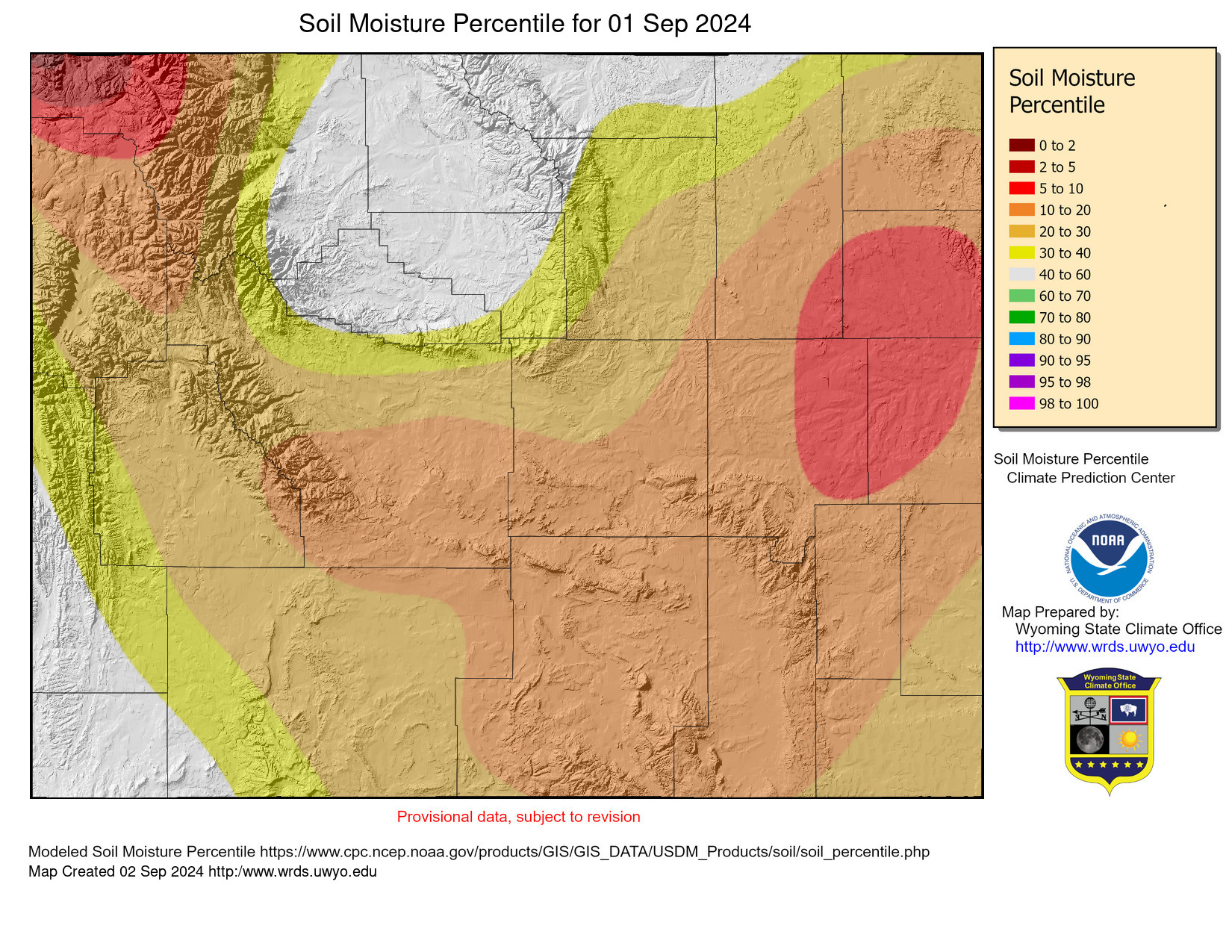
https://vegdri.unl.edu/Home/VegDRIQuad.aspx?WY,2
https://www.cpc.ncep.noaa.gov/products/Soilmst_Monitoring/US/Soilmst/Soilmst.shtml
http://www.wrds.uwyo.edu/Soil/SM-Ptile-Current.html
Additional Resources
These are the broad sources we got information from. These websites are trustworthy and are reliable sources for additional information. In the future we hope to add more source for additional information.
- https://droughtmonitor.unl.edu
- https://www.drought.gov
- https://www.cpc.ncep.noaa.gov
- https://www.nrcs.usda.gov/wps/portal/wcc/home
- https://waterwatch.usgs.gov
- Lake DeSmet Operating Department at lakedesmet@johnsoncowy.us
- http://dnrc.mt.gov/divisions/water/projects/tongue-river
- https://seoflow.wyo.gov/Data/Map/Parameter/Total%20Storage/Location/Identifier/Interval/Latest
- https://vegdri.unl.edu/Home/VegDRIQuad.aspx?WY,2
